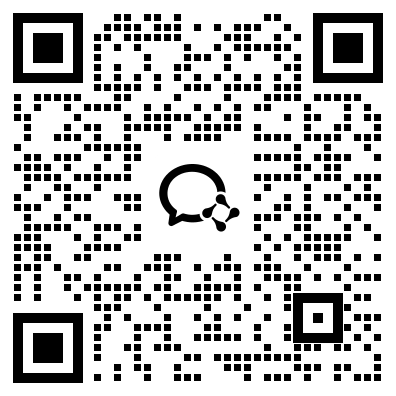自考《英语词汇学》复习资料第一章
以下是我整理的英语词汇学的资料。我在考的时候主要就是靠这个东东。 希望对还没有过的人有所帮助。
大家请注意:笔记中大多数是以名词解释的形式出现的,这些是绝对的基础,应该一字不漏的背下来。其实不少简答题也就是几个定义的汇总,再加上个例子就可以拿满分了。区分两个词的区别,主要还是指明其各自的定义。
第一章
1. Word —— A word is a minimal free form of a language that has a given sound and meaning and syntactic function.
2. There is no logical relationship between sound and meaning as the symbolic connection between them is arbitrary and conventional. E.g. “woman” means ’Frau’ in German, ’Femme’ in French and ’Funv ’in Chinese. On the other hand, the same sound /rait/ can mean right, rite and write, though denoting different things, yet have the same sound.
3. The difference between sound and form result from 4 major factors.
(At least 80%of the English words fit consistent spelling patterns)
a). the internal reason is English alphabet does not have a separate letter to represent each sound in the language.
b). Pronunciation has changed more rapidly than spelling
c). Influence of the work of scribes/printing freezes the spelling of words in 1500
d). Borrowing of foreign language
4. Vocabulary —— Vocabulary is most commonly used to refer to the sum total of all the words of a language. It can also refer to all the words of a given dialect, a given book, a given subject and all the words possessed by an individual person as well as all the words current in a particular period of time in history.
The general estimate of the present day English vocabulary is over 1 million words.
5.Classification of Words—by use frequency, by notion, by origin
1). Basic word stock – the foundation of the vocabulary.
1. all national character (most important)– natural phenomena
most common things and phenomena of the human body and relations
world around us names of plants and animals
action, size, domain, state
numerals, pronouns, prep. ,conj.
2. stability – they donate the commonest thing necessary to life, they are like to remain unchanged. Only relative, some are undergoing some changes. But the change is slow.
e.g. arrow, bow, chariot, knight – past
electricity, machine, car, plane —— now
3. productivity – they are mostly root words or monosyllabic words, they can form new words with other roots and affixes.
e.g. foot – football, footage, footpath, footer
4. polysemy – often possess more than one meaning. Become polysemous.
e.g. take to move or carry from one place to another
to remove
5. collocability – quite a number of set expressions, idiomatic usages, proverbial saying and others
e.g. heart – a change of heart, a heart of gold
Non-basic vocabulary ——
1. terminology – technical terms
photoscanning, hepatitis, indigestion, penicillin, algebra, trigonometry, calculus
2. jargon – specialized vocabulary in certain professions.
Bottom line, ballpark figures, bargaining chips, hold him back, hold him in, paranoid
3. slang —— substandard words often used in informal occasions
dough and bread, grass and pot, beaver, smoky, bear, catch, holler, Roger, X-rays,
Certain words are labeled slang because of their usage.
4. argot – words used by sub-cultured groups
can-opener, dip, persuader
cant, jargon , argot are associated with, or most available to, specific groups of the population.
5. dialectal words – only by speakers of the dialect
beauty, chook, cocky, station, auld, build, coo, hame, lough, bog
6. archaisms – words no longer in common use or restricted in use. In older poems, legal document and religious writing or speech.
7. neologism – newly created words with new meaning e.g. microelectronics, futurology, AIDS, internet, E-mail
old meaning acquired new meaning e.g. mouse, monitor
2). Content word (notional word) – denote clear notions.
Functional word (empty word, form word) – do not have notions of their own, express the relation between notions, words and sentences.
a. Content words constitute the main body of the English vocabulary are numerous.
Functional words are in a small number.
b. Content words are growing.
Functional words remain stable.
c. Functional words do far more work of expression than content words.
3). Native words – are words brought to Britain in the 15 century by the German tribes. Ango-Saxon Words, 50,000-60,000
What is true of the basic word stock is also true of native world. More are
1. neutral in style (not stylistical specific )
2. 2.frequent in use (in academic fields and science French, Latin or Greek are used) (usage 70-90%)
Borrowed words (loan words, borrowing) – words taken over from foreign language. 80%
According to the degree of assimilation and manner of borrowing, we can bring the loan words under 4 classes.
1.Denizens – words borrowed early and now are well assimilated into English language.
e.g. port from portus(L) shift, change, shirt, pork
cup from cuppa(L)
2.Aliens – retained their original pronunciation and spelling
e.g. décor(F) blitzkreeg(G) emir, intermez, rowtow, bazaar, rajar, status quo
3.translation loans – formed from the existing material in the English language but modeled on the patterns taken from another language.
1). Word translated according to the meaning
e.g. mother tough from lingua maternal(L)
black humor from humor noir
long time no see, surplus value, master piece
2). Words translated according to the sound
e.g. kulak from kyrak(Russ)
lama from lama(Tib)
ketchup
tea
4. Semantic loans – their meaning are borrowed from another language
e.g. stupid old dump
new sassy
dream old joy and peace
pioneer old explorer/person doing pioneering work
new a member of the young pioneer
fresh old impertinent, sassy, cheeky













